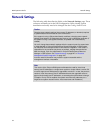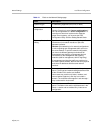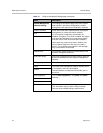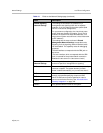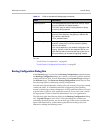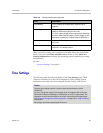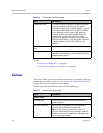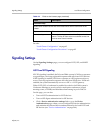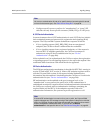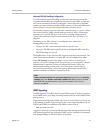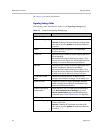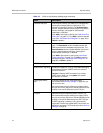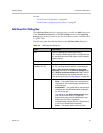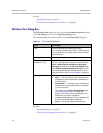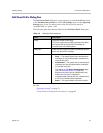
DMA Operations Guide Signaling Settings
72 Polycom, Inc.
• Configure specific ports or prefixes for “unauthorized” or “guest” SIP
calls that can only access specific resources (VMRs, VEQs, or a SIP peer).
H.323 Device Authentication
In an environment where H.235 authentication is used, H.323 devices include
their credentials (name and password) in registration and signaling (RAS)
requests. The Polycom DMA system authenticates requests as follows:
• If it’s a signaling request (ARQ, BRQ, DRQ) from an unregistered
endpoint, the Call Server doesn’t authenticate the credentials.
• If it’s a signaling request from a registered endpoint, or if the request is
from an MCU or neighbor gatekeeper, the Call Server attempts to
authenticate using its device authentication list (see “Device
Authentication” on page 264).
If the credentials can’t be authenticated, the Call Server rejects the registration
or signaling request. For call signaling requests, it also rejects the request if the
credentials differ from those with which the device registered.
SIP Device Authentication
The SIP digest authentication mechanism is described in RFC 3261, starting in
section 22, and in RFC 2617, section 3). When a SIP endpoint registers with or
calls the Polycom DMA system, if the request includes authentication
information, that information is checked against the Call Server’s local device
authentication list (see “Device Authentication” on page 264).
SIP authentication can be enabled at the port/transport level or (for
“unauthorized” access prefixes) the prefix level. If SIP authentication is
enabled and an endpoint’s request doesn’t include authentication information,
the Call Server responds with an authentication challenge containing the
required fields (see the RFCs). If the endpoint responds with valid
authentication information, the system accepts the registration or call.
Note
You can turn authentication off and on for specific devices (assuming that it’s turned
on here for that device type). See “Edit Device Dialog Box” on page 98.
Note
If inbound SIP authentication is turned on for a port or prefix, the Polycom DMA
system challenges any SIP message coming to the system via that port or with that
prefix. Any SIP peer and other device that interacts with the system by those means
must be configured to authenticate itself, or you must turn off Device
authentication for that specific device. See “Edit Device Dialog Box” on page 98.



